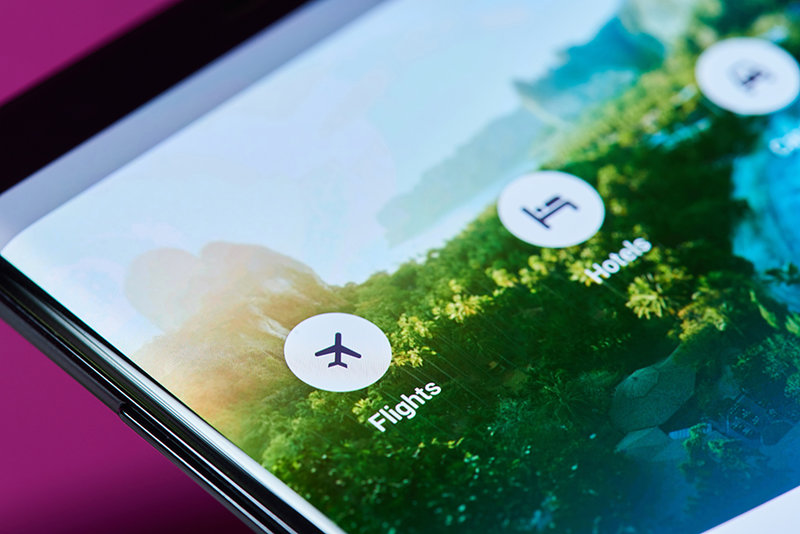insight
Flight sharing:
Europe and US at odds over industry
Flight sharing is an increasingly popular way to travel, with new platforms popping up to connect passengers with pilots. But while the European market is growing, in the US obstructive regulation is weighing down start-ups, as Eva Grey reports
T
he concept of flight sharing, which involves the sharing of the costs of small aircraft flights between a licensed pilot and their passengers, might come as a new notion even for avid travellers. However, this has been a tried and tested method of flying since at least the 1960s, when private pilots used to advertise their routes via airport bulletin boards.
In recent years, online platforms such as Wingly and Coavmi in Europe, and (the now defunct) Flytenow and AirPooler in the US have seized the opportunity. Much like Uber or Lyft, they created accessible platforms for users to search for flights, contact pilots and secure seats on shared flights in a simple, safe and secure manner.
But while in Europe new safety regulation and financial injections are helping this new market to blossom, in the US, the Federal Aviation Administration (FAA) decided to outlaw flight sharing and ban any such platforms from advertising private flights to the public. What can this stark difference in approach between the two be attributed to? And can a new bill finally turn the US ban around?
A simple idea, executed well
Aviation is expensive. Whether you’re a passenger hunting for affordable deals on airplane tickets, or a private pilot, both the price of travelling and maintaining it as a hobby can be prohibitively expensive for many.
To keep their licence, pilots usually have to amass a minimum number of flight hours, landings and take-offs in a single year. According to Christopher Koopman, senior research fellow and director of the Technology Policy Program at the Mercatus Center, a pilot who flies 100 hours a year could spend about $225.30 per hour when all costs are accounted for.
In Europe, the European Aviation Safety Agency (EASA) fortified the practice by publishing a safety charter, solidifying the principles, responsibilities and values on both the pilots’ and passengers’ part when sharing flights. As of April 2017, six online platforms (BBPlane, Coavmi, FlyBook, Flyt.club, Flytaxi and Wingly) had signed the charter.

Further guidance from the UK’s Civil Aviation Authority (CAA) underpins the boundaries of flight sharing: the non-commercial aircraft needs to transport no more than six passengers; only the direct costs of flying (fuel, airfield charges and rental fee) are allowed to be split; and there should be no element of profit on either part.
Such clear, straightforward regulation is why the European market for flight sharing is growing. The largest platform, Wingly, recently announced a successful seed fundraise of €2m to double its size and expand in new countries. It currently operates in England, France and Germany, hosts more than 150,000 users, including 10,000 pilots, and offers more than 60,000 flights available for booking.
“On the long term, flight sharing won’t only help increasing the flight hours but also spark interest in aviation to the wider public so that the number of pilots in Europe will rise even further,” the company said in a press release. “Flying is the oldest dream of mankind, we shouldn’t forget that."
A pilot who flies 100 hours a year could spend about $225.30 per hour when all costs are accounted for
Flight sharing gets grounded in the US
Across the ocean, US users haven’t been as lucky.
In 2014, start-up AirPooler launched to unanimous praise, and was quickly dubbed “Lyft for private planes” by Techcrunch. Around the same time, rival Flytenow took off after a seed funding of $145,000 and enjoyed a similarly short-lived time in the spotlight, after the FAA decided to ban flight sharing altogether in August 2014, effectively stifling this budding market. Subsequent attempts to overturn the ban were rejected, and eventually both Airpooler and Flytenow were forced to completely shut down.
Since then, the FAA has refused to budge on its stance despite growing pressure. Calls to overturn the ban and liberalise flight sharing grew particularly loud in the wake of power outages and winter weather woes, which affected big airports such as Atlanta's Hartsfield-Jackson International Airport and John F. Kennedy International Airport and left passengers stranded at the height of the winter holidays travelling season.

Image courtesy of PixieMe / Shutterstock.com
Writing in The Hill last year, Koopman called for the US Transportation Secretary Elaine Chao to force the FAA to issue new guidance and abandon its stance that classifies private pilots as “common carriers” in violation of federal law. If not, he argued, Congress could enact reform.
“The FAA has been able to get away with shutting down these platforms because Congress never defined the term ‘common carrier’ in the Federal Aviation Act,” Koopman said. “By writing a definition into law, Congress could ensure that these innovative platforms will continue to provide options to passengers without the threat of interference by the FAA.”
The hope now hinges on the Aviation Empowerment Act, introduced in April this year by Utah Senator Mike Lee, which aims to “add definitions for the terms ‘common carrier’ and ‘personal operator’”, separating the two concepts and allowing private pilots to invite passengers on board.
The bill is currently in progress, and if it is successful in changing the wording of the current law, a new lucrative market could open up in the US for those aviation start-ups eager and confident enough to have another go.
Calls to overturn the ban and liberalise flight sharing grew particularly loud in the wake of power outages